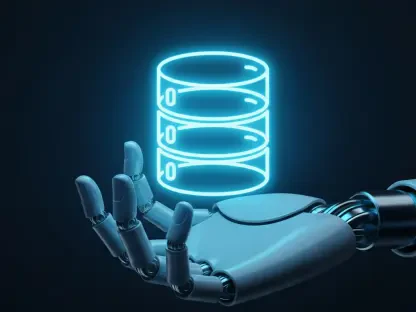In a world where software reliability is vital to business success, the stakes for software testing are sky-high. With the complexity and scale of software systems escalating, traditional QA methods struggle to keep pace. Enter AI-driven software testing—a revolutionary approach promising to transform software validation and deployment cycles. By harnessing AI’s capabilities, this technology aims to automate extensive test coverage and accelerate bug detection in ways that were previously unimaginable.
The Rise of AI in Software Testing
AI integration into software testing has marked a new chapter in the software development industry. At its core, AI enhances the efficiency and effectiveness of testing processes by leveraging machine learning, neural networks, and other advanced algorithms. These technologies not only automate repetitive and time-consuming tasks but also reduce human errors. As a result, AI-driven testing is becoming an indispensable tool in the broader software development and QA landscape, offering benefits that extend beyond traditional methodologies.
The AI-driven approach is particularly relevant for developers and QA teams given the increasing complexity of software systems. By enabling smarter, faster testing strategies, it fits seamlessly into agile and DevOps environments, supporting the need for continuous integration and continuous deployment workflows.
Core Features of AI-Driven Software Testing
Automation and Test Coverage
One of the standout features of AI-driven testing is its unparalleled automation capabilities. AI enhances automation by applying intelligent algorithms that can generate, execute, and adjust test cases autonomously. This leads to significant improvements in test coverage across diverse application environments, ensuring that more aspects of the software are rigorously evaluated. Through AI, test efficiency is boosted, reducing both the time and resources traditionally required for comprehensive testing.
Predictive Analytics and Self-Healing
Predictive analytics, powered by AI, allows for proactive identification of potential issues before they manifest as critical failures. This capability ensures a preemptive approach to quality assurance, thereby minimizing downtime and enhancing software reliability. The self-healing aspect, meanwhile, addresses minor anomalies automatically without human intervention. It monitors and updates test scripts dynamically, making them resilient to changes in the application’s user interface or underlying code structure.
Recent Innovations and Trends
Recent advancements in AI-driven testing demonstrate an accelerating trend toward more sophisticated and robust solutions. Innovations such as AI-generated documentation and codeless test creation are becoming increasingly prevalent, representing a significant evolution in how tests are designed and executed. There is also a noticeable industry shift towards low-code platforms that democratize the testing process, enabling individuals without deep technical knowledge to contribute effectively.
Real-World Applications and Use Cases
The practical application of AI-driven testing spans multiple industries, from finance to healthcare to retail. Companies leverage these technologies to ensure their software remains reliable, secure, and efficient. Notably, AI-driven tools are employed in complex systems where manual testing would be prohibitively expensive and time-consuming. Unique implementations, such as neural networks adjusting tests based on user behavior patterns, have shown remarkable improvement in error detection while significantly lessening testing time.
Challenges and Limitations
Despite its advantages, AI-driven testing is not without challenges. Technical hurdles, including issues with AI model accuracy and integration with legacy systems, pose significant barriers. Moreover, regulatory concerns regarding AI’s decision-making transparency and data privacy remain contentious issues. Continued development efforts are necessary to address these obstacles, aiming for solutions that improve AI’s reliability and user trust.
Future Prospects and Developments
Looking ahead, AI-driven software testing is primed for continued growth and sophistication. Future advancements may include more refined AI models that provide deeper insights and predict future trends with higher accuracy. Additionally, as AI becomes more ingrained in QA processes, its potential to handle even more complex scenarios will grow. These developments will likely push the boundaries of what AI—and indeed software testing as a whole—can achieve.
Technology Verdict
The advent of AI-driven software testing has redefined how businesses approach quality assurance. By automating tedious tasks and providing intelligent insights, it offers a promising future for software development. However, its successful adoption depends on overcoming existing challenges and embracing ongoing innovations. As the industry continues to evolve, those leveraging AI testing technologies will be better equipped to navigate an increasingly competitive market, ensuring superior product quality and customer satisfaction.









